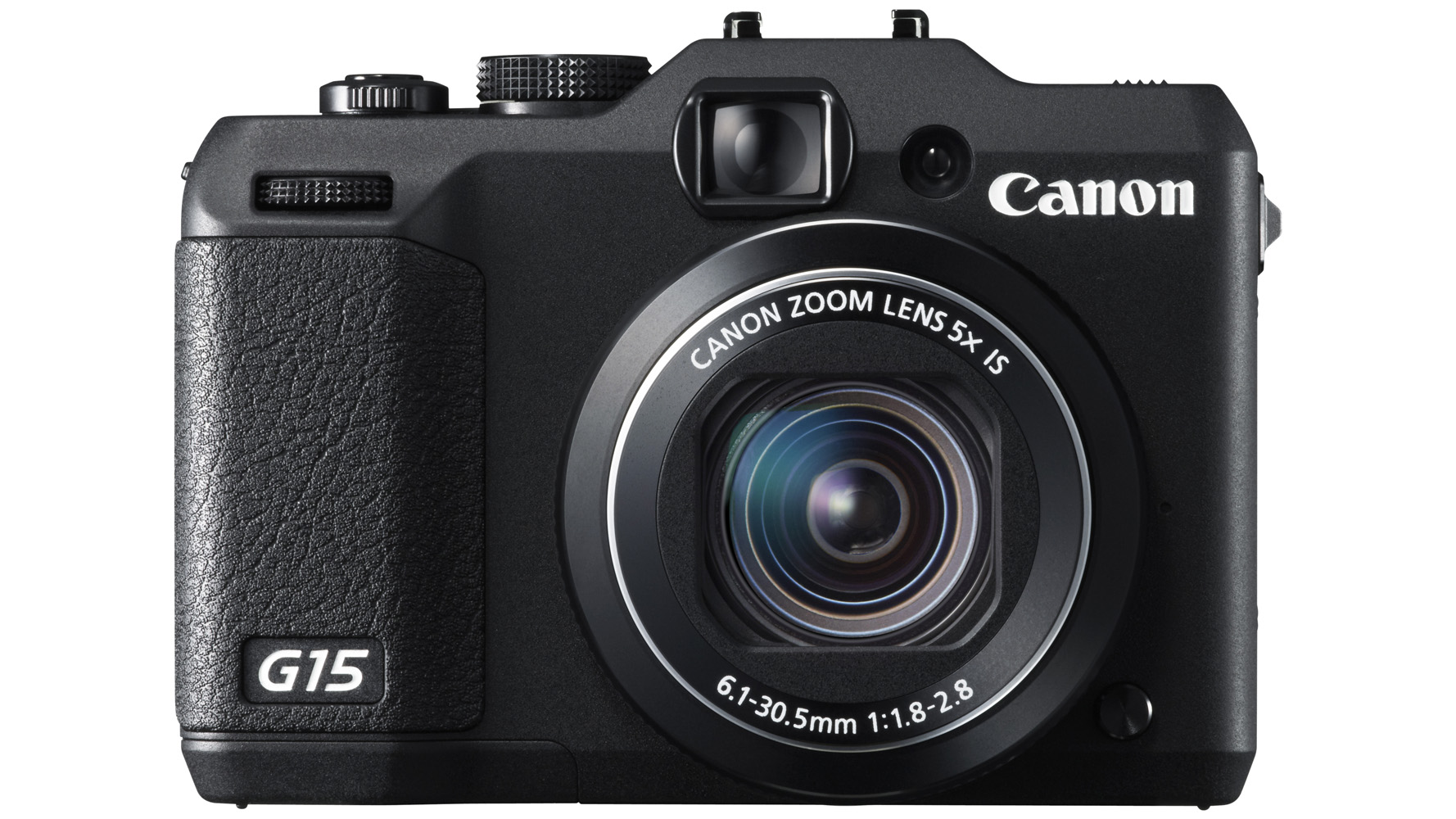Why you can trust TechRadar
The Canon G series is well known for its high quality image output, and the Canon G15, we're happy to report, is no different.
Images taken straight from the camera show a good level of colour - that is they're bright and punchy without being overly vibrant. There's also lots of detail, and the f/1.8 maximum aperture allows for some beautiful shallow depth of field effects to be achieved.
Although the camera is aimed at experienced photographers, leaving it in fully automatic mode also produces good results. On the majority of occasions, the camera is able to accurately guess the scene in front of it, especially when it comes to close-up focusing.
Several of the automatic options within semi-automatic and fully manual mode are good too. For instance, automatic white balance does a fine job of accurately reproducing colours, even in mixed lighting conditions.
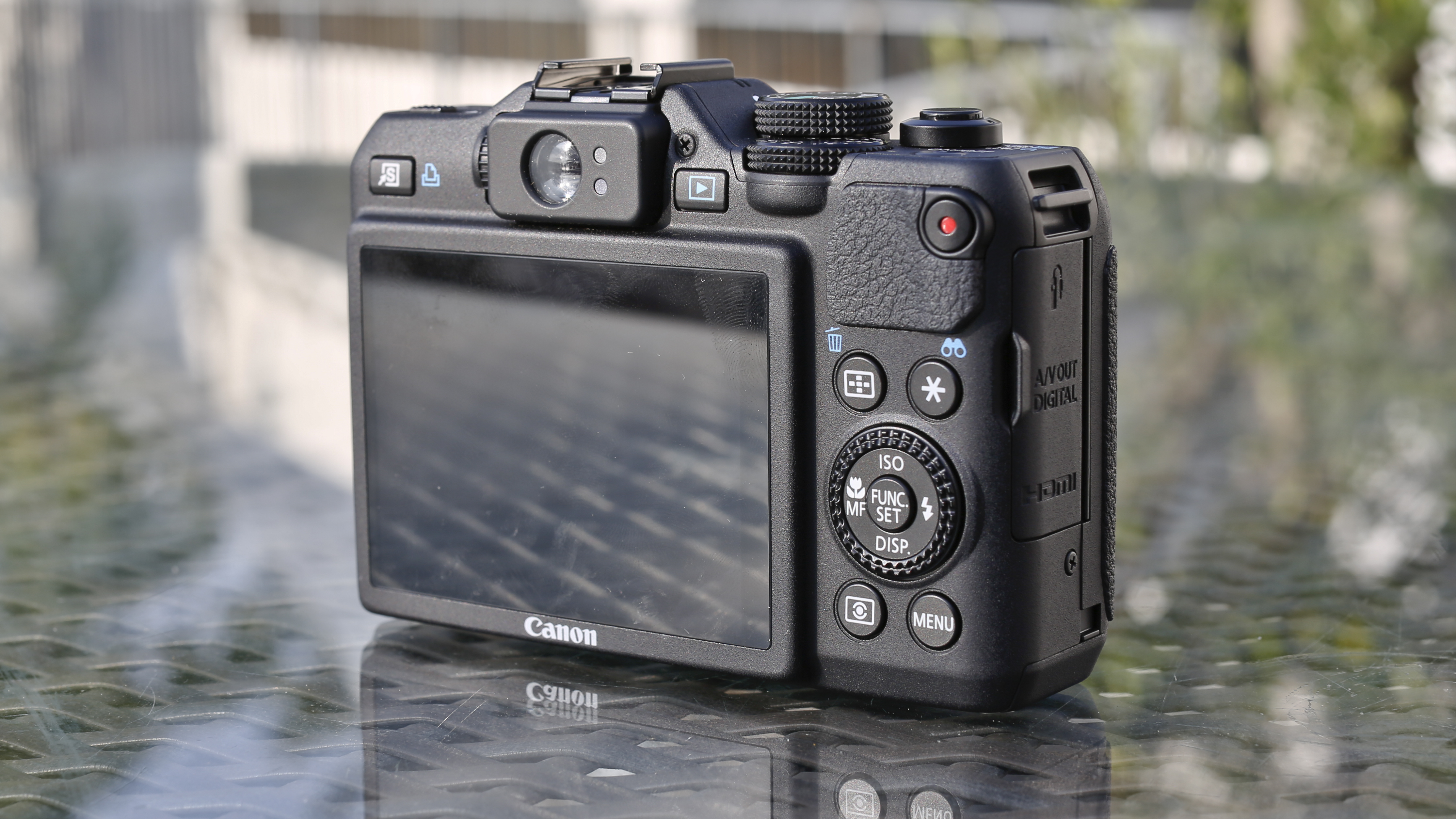
Evaluative metering also works well in the majority of conditions, even when presented with a high-contrast scene.
Shooting at high sensitivities, such as ISO 800, produces images that retain a good level of detail without introducing too much image noise. Since the lens has a maximum aperture of f/1.8, using sensitivities much higher than this will be a relatively rare occasion, but noise control is still good up to around ISO 1600.
After this, the quality does start to deteriorate, but the images should be adequate for small printing or web sizes.
By shooting at a narrow aperture of f/8 we can examine the sharpness of the lens. The good news is that edge to edge sharpness seems to be retained up to the edge of the frame. When you do use a wider aperture, the drop off in focus is smooth and helps to create pleasing effects.
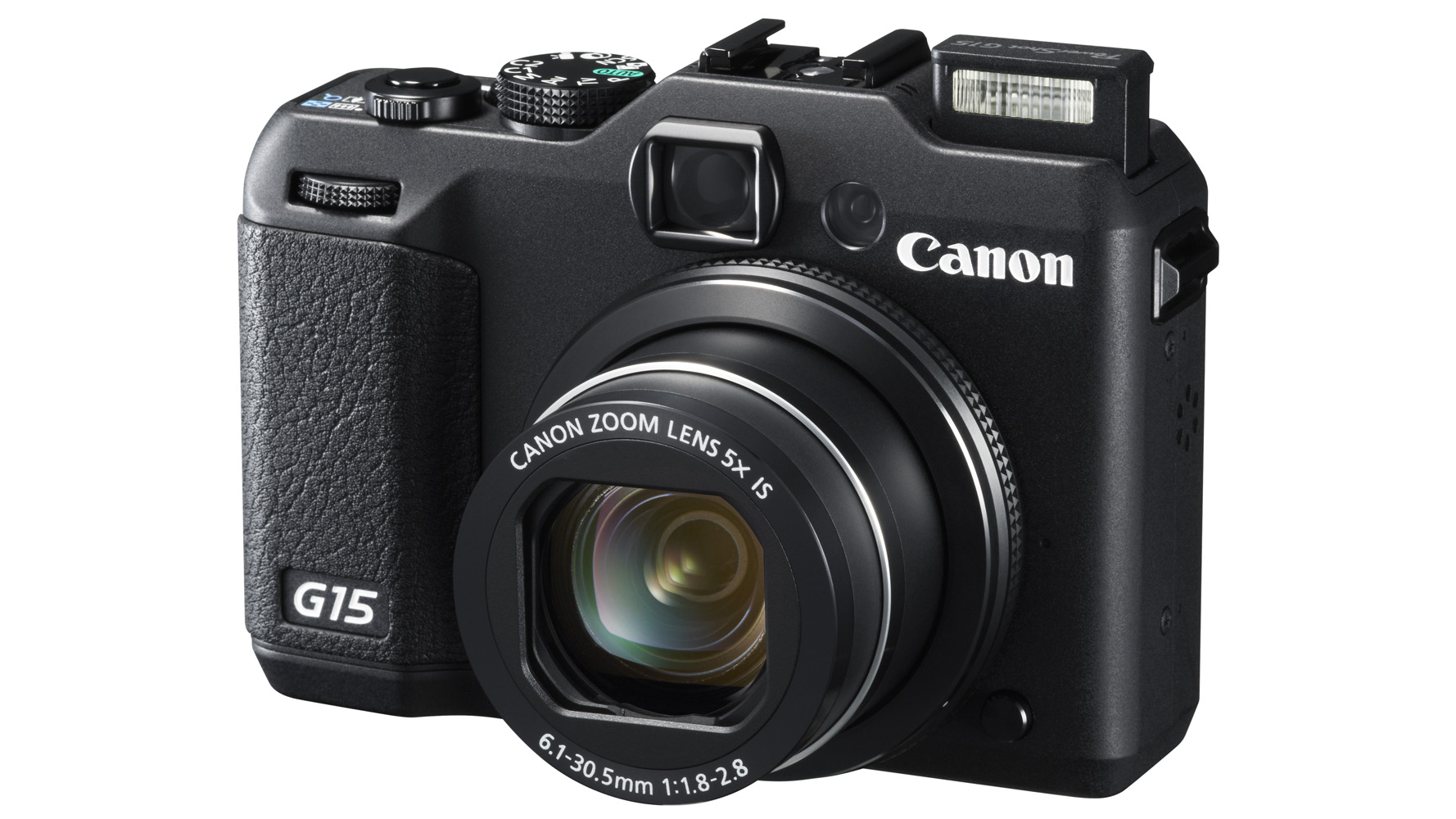
A large number of modern compact cameras have creative digital filters in a bid to compete with the likes of Instagram on smartphones. The Canon G15 is no different, with a selection of filters available under a specific mode.
These include Fish-Eye, Toy Camera, HDR, Nostalgic and others (see the sample images page for more). Some of the filters are fun to experiment with, though of course some are better than others (probably depending on personal preferences).
It's a big shame, however, that the filters can't be used when shooting in raw format, leaving you with a "clean" version of the image should you decide you're not so keen on the filter effect after all.
The fact that you can't retain creative control over shutter speeds and aperture when using the filters is also a disappointment.
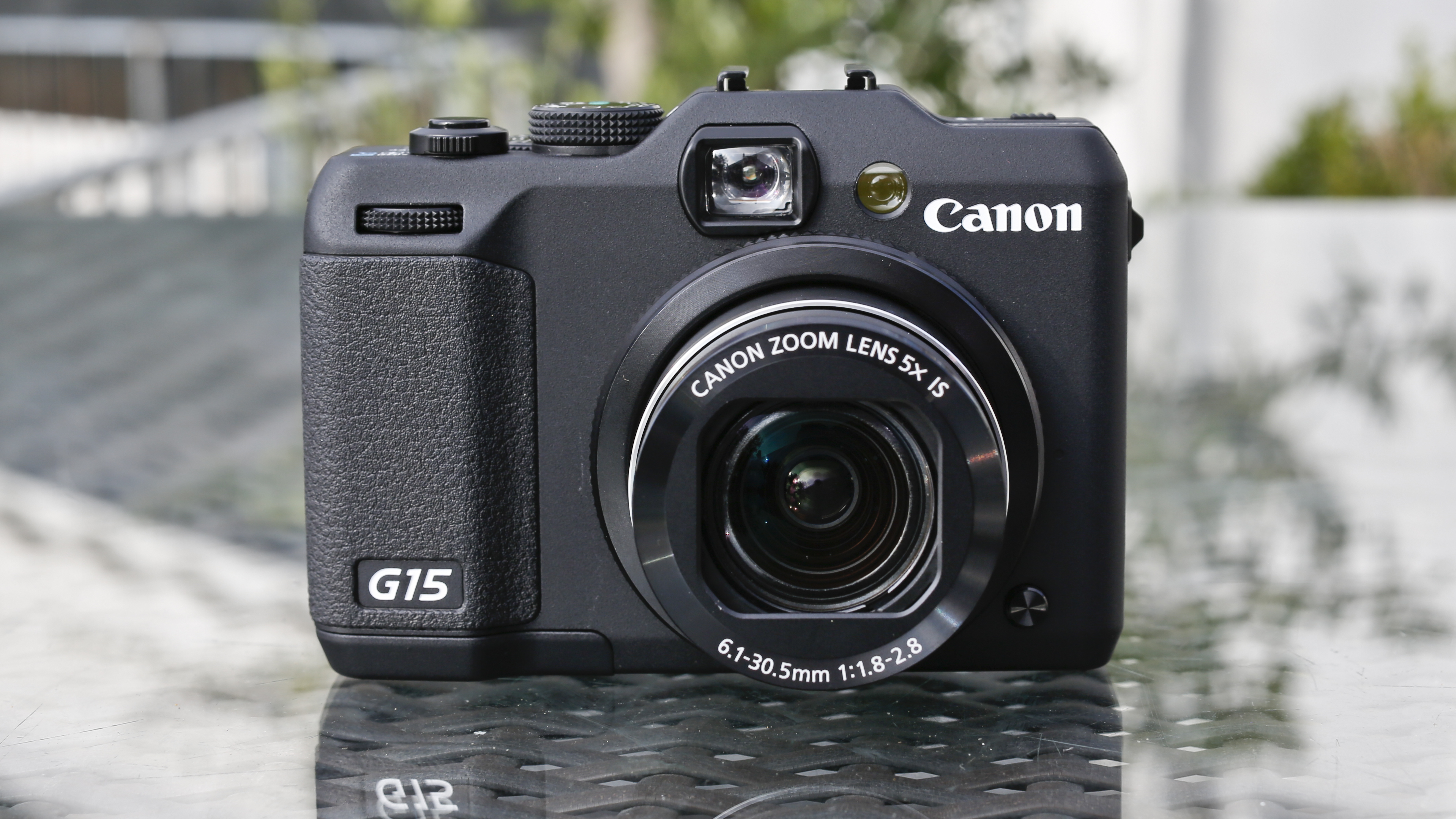
Autofocus is quick and accurate in the majority of cases, while close-up focusing can be achieved by activating macro mode from the navigational pad.
With this in use, you can get extremely close, making it particularly useful for nature and flower photography, and giving the Canon G15 the edge over the larger sensored Canon G1 X, which struggles with macro focusing.
The Canon G15 has a fixed screen, which will be a contentious matter for those who miss the flexibility of an articulating device. While you can no longer realistically compose self-portraits with any degree of accuracy, composing from the less awkward angles is still possible, thanks to the good angle of view the screen provides.
It would have perhaps been nice for Canon to produce two versions of the PowerShot G15, one without and one with an articulating screen, for those who desire one. It does work well in bright light though, meaning you don't very often need to use the viewfinder to compose an image.
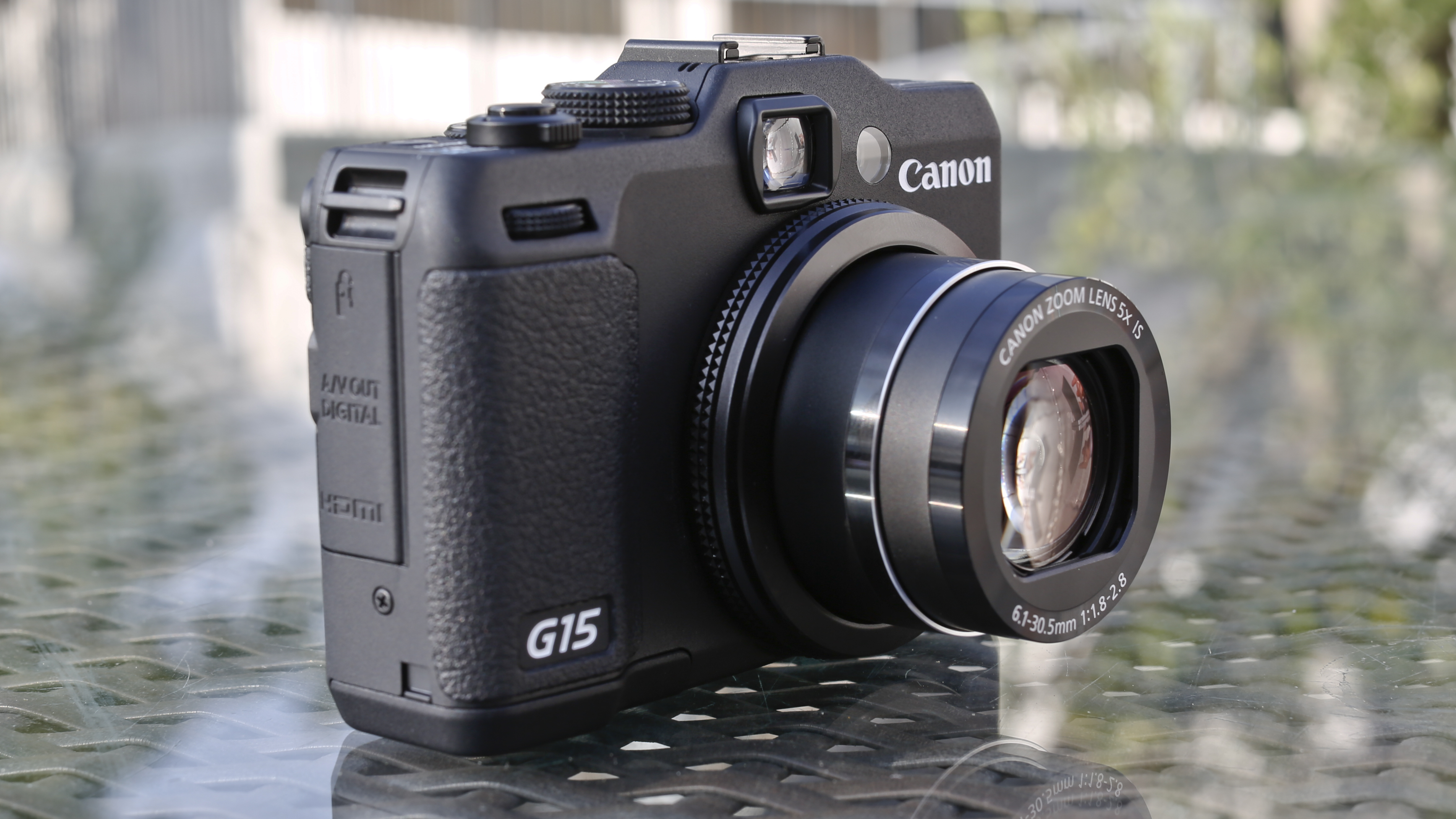
The viewfinder on the G series has always been a bit of an oddity. It's a direct viewfinder, meaning you are basically looking through a hole in the top of the camera to compose your image.
It does have optics so you can see how the lens zooms in and out, but aside from that there's no other information (such as autofocus point or selected aperture).
This, coupled with its small size, means it has limited uses, and we found we used it only in the very brightest sunlight, or if you were trying to stabilise the camera when using a slow shutter speed.
Still, it's nice to have it there for those occasional times you need it, rather than not at all. It's worth remembering that using a direct viewfinder leaves you liable to parallex error, since the viewfinder doesn't quite match up to the real view the lens is seeing.
Current page: Performance
Prev Page Build quality and handling Next Page Image quality and resolutionAmy has been writing about cameras, photography and associated tech since 2009. Amy was once part of the photography testing team for Future Publishing working across TechRadar, Digital Camera, PhotoPlus, N Photo and Photography Week. For her photography, she has won awards and has been exhibited. She often partakes in unusual projects - including one intense year where she used a different camera every single day. Amy is currently the Features Editor at Amateur Photographer magazine, and in her increasingly little spare time works across a number of high-profile publications including Wired, Stuff, Digital Camera World, Expert Reviews, and just a little off-tangent, PetsRadar.
